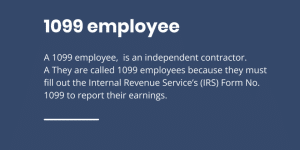Updated April 17, 2025
Taking Steps After Wrongful Termination
Experiencing wrongful termination can be a disheartening and overwhelming situation for any employee. Whether you have been dismissed due to discrimination, retaliation, or a breach of contract, understanding your rights and the procedures for filing a complaint is crucial. This guide aims to provide clarity on how to navigate the complexities of wrongful termination claims, empowering you to take the necessary steps toward justice.
Understanding Wrongful Termination
Wrongful termination occurs when an employee is fired in violation of employment laws or contractual agreements. While most employees in the U.S. are employed "at-will," meaning their employer can terminate them for almost any reason, there are exceptions. Certain federal and state laws protect employees from being fired for:
- Discrimination based on race, gender, age, disability, or other protected categories.
- Retaliation for reporting illegal activities or exercising legal rights.
- Violating public policy, such as firing an employee for taking legally protected leave.
Recognizing the nature of your termination is the first step in determining whether you have a valid claim.
Types of Wrongful Termination Claims
Discrimination Claims
Discrimination claims arise when an employee is terminated based on protected characteristics. Federal laws, such as Title VII of the Civil Rights Act, prohibit discrimination on the basis of:
- Race
- Color
- National origin
- Sex (including pregnancy)
- Religion
- Age (40 or older)
- Disability
If you believe your termination was due to discrimination, you may file a complaint with the Equal Employment Opportunity Commission (EEOC) or your state’s civil rights agency.
Retaliation Claims
Retaliation occurs when an employer fires an employee for engaging in legally protected activities, such as:
- Reporting workplace safety violations
- Filing a complaint about discrimination or harassment
- Participating in an investigation
Whistleblower protection laws safeguard employees from retaliation. If you suspect your termination was retaliatory, you can file a complaint with the appropriate government agency.
Breach of Contract Claims
If you have an employment contract, your employer must adhere to its terms. A wrongful termination claim may arise if your employer violates the contract’s provisions regarding termination. This includes not following the stipulated processes or firing you without just cause.
To pursue a breach of contract claim, you may need to gather evidence of the contract and how it was violated.
Steps to File a Complaint for Wrongful Termination
Step 1: Document Everything
Begin by documenting all relevant information related to your termination. This includes:
- Dates of employment and termination
- Copies of performance reviews and disciplinary actions
- Correspondence with your employer regarding your termination
- Witness statements from colleagues who may have relevant information
Maintaining a comprehensive record will strengthen your case and provide necessary evidence.
Step 2: Review Company Policies
Familiarize yourself with your company’s employee handbook and policies regarding termination. Understanding the procedures your employer is required to follow can help you identify any violations that may support your claim.
Step 3: Consult with an Employment Attorney
Before proceeding with any formal complaints, consult with an experienced employment attorney. They can provide valuable insights into your situation and guide you on the best course of action. An attorney can also help you understand the specific laws applicable in your state and how they relate to your case.
Step 4: File a Complaint with the Appropriate Agency
Depending on the nature of your claim, you may need to file a complaint with a government agency. For discrimination or retaliation claims, this typically involves:
- Filing with the EEOC: You can submit a charge of discrimination online, by mail, or in person. The EEOC will investigate your claim and may facilitate a resolution or issue a "right to sue" letter.
- State Agencies: If your state has its own civil rights agency, you may file a complaint there as well. State laws may offer additional protections beyond federal laws.
Step 5: Consider Filing a Lawsuit
If the agency investigation does not resolve your issue, or if you receive a "right to sue" letter, you may choose to file a wrongful termination lawsuit in civil court. Your attorney can assist you in preparing the necessary documentation and representing your interests throughout the legal process.
Time Limits for Filing a Complaint
Be mindful of the statute of limitations for filing a wrongful termination claim. These time limits vary by state and the type of claim. Generally, you have:
- 180 days to file a discrimination claim with the EEOC.
- One year to file a retaliation complaint in many states.
- Two to three years for breach of contract claims, depending on state laws.
Missing these deadlines can jeopardize your ability to seek justice, so it’s essential to act promptly.
Should You Report to Human Resources?
You may wonder whether to report your wrongful termination to your company’s Human Resources (HR) department. In some cases, HR may be able to address your concerns internally, potentially resolving the issue without legal action. However, consider the following:
- If you believe HR was complicit in your termination, it may not be wise to approach them.
- Reporting to HR may lead to retaliation, so weigh the risks carefully.
Consulting with an attorney can help you decide the best approach based on your specific situation.
Seeking Compensation for Wrongful Termination
If you successfully prove your wrongful termination claim, you may be entitled to various forms of compensation, including:
- Back pay for lost wages
- Reinstatement to your position
- Compensation for emotional distress
- Legal fees and costs associated with your claim
The amount of compensation will depend on the specifics of your case and the damages incurred.
Protecting Your Rights
Understanding your rights as an employee is crucial in the event of wrongful termination. Remember to:
- Keep detailed records of your employment and termination.
- Seek legal advice as soon as possible.
- Be aware of the relevant laws and timelines for filing a complaint.
Taking proactive steps can significantly enhance your chances of a favorable outcome.
Conclusion
Filing a complaint for wrongful termination can be a daunting process, but you don’t have to navigate it alone. By understanding your rights, documenting your case, and seeking legal assistance, you can take meaningful steps toward justice. Remember, you have the right to advocate for yourself and seek compensation for any unlawful actions taken by your employer. If you need help, don’t hesitate to reach out to an employment attorney who can guide you through the complexities of your situation.
Consulting a wrongful termination attorney will provide you with the necessary guidance and support to navigate the legal process effectively. Remember, time is of the essence, so seek legal advice promptly to maximize your chances of a successful outcome.
Call Setyan Law at (213)-618-3655 for a consultation.







